

John James Audubon's Birds of America. John James Audubon's Birds of America is a portal into the natural world.
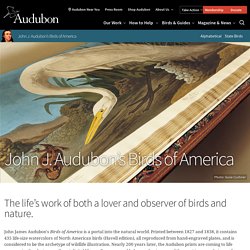
Printed between 1827 and 1838, it contains 435 life-size watercolors of North American birds (Havell edition), all reproduced from hand-engraved plates, and is considered to be the archetype of wildlife illustration. Nearly 200 years later, the Audubon prints are coming to life once again, thanks to our vibrant digital library. Roam around below and enjoy one of the most treasured pieces of Audubon's grand and wild legacy. Each print is also available as a free high-resolution download. The images in our collection are provided courtesy of the John James Audubon Center at Mill Grove in Audubon, Pennsylvania, and the Montgomery County Audubon Collection. John James Audubon The story of John James Audubon is one of triumph over adversity; his accomplishment is destined for the ages. Piedmont Bird Club - Home. Explore Data.
Feeding Birds: a Quick Guide to Seed Types. The seed that attracts the widest variety of birds, and so the mainstay for most backyard bird feeders, is sunflower.
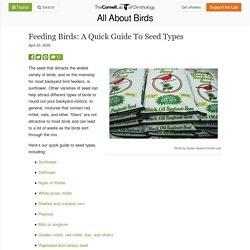
Other varieties of seed can help attract different types of birds to round out your backyard visitors. In general, mixtures that contain red millet, oats, and other “fillers” are not attractive to most birds and can lead to a lot of waste as the birds sort through the mix. Here’s our quick guide to seed types, including: Sunflower There are two kinds of sunflower—black oil and striped. People living in apartments or who have trouble raking up seed shells under their feeders often offer shelled sunflower.
Sunflower is very attractive to squirrels, a problem for people who don’t wish to subsidize them. Safflower Safflower has a thick shell, hard for some birds to crack open, but is a favorite among cardinals. Cardinals and grosbeaks tend to prefer tray and hopper feeders, which makes these feeders a good choice for offering safflower. Goldfinches on thistle socks. Peanuts. The Best Birding Apps And Field Guides. Technology has been a part of birding for as long as people have been observing birds.
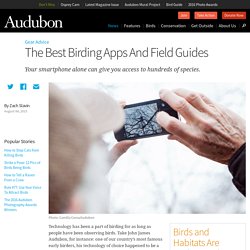
Take John James Audubon, for instance: one of our country’s most famous early birders, his technology of choice happened to be a shotgun full of bird shot and a burlap bag. Not the most complex, and certainly not digital, but it was technology nonetheless. Over the centuries technological advances have changed the hobby of birdwatching several times over. Opera glasses and notepads replaced shotguns on the first Christmas Bird Counts in the early 1900’s. By the middle of the 20th century, birders were equipped with the first field guides and better, lighter, more affordable binoculars. So take a look at some of the apps described below (as well as other birding apps not listed here) and the next time you go birding heading out without your smartphone will feel as antiquated as heading out with a shotgun full of bird shot. Field Guides Active Identification Citizen Science Bird-finding Guides Song Learning. CommonBirdsofHouston.
The 100 greatest owl pictures you’ll ever see. Owls are both amazing and awe-inspiring.
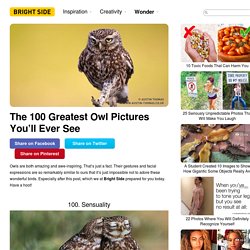
That’s just a fact. Their gestures and facial expressions are so remarkably similar to ours that it’s just impossible not to adore these wonderful birds. Especially after this post, which we at Bright Side prepared for you today. Have a hoot! 100. 99. 98. 97. 96. Videos, Photos and Sound Recordings of all the Birds of the World. Handbook of the Birds of the World Alive. The Feather Atlas - Feather Identification and Scans - U.S. Fish and Wildlife Service Forensics Laboratory. Goal This website is designed to assist feather identification by providing high-resolution scans of flight feathers of major groups of North American birds.
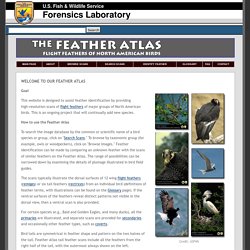
This is an ongoing project that will continually add new species. How to use the Feather Atlas To search the image database by the common or scientific name of a bird species or group, click on "Search Scans. " To browse by taxonomic group (for example, owls or woodpeckers), click on "Browse Images. " The scans typically illustrate the dorsal surfaces of 12 wing flight feathers (remiges) or six tail feathers (rectrices) from an individual bird (definitions of feather terms, with illustrations can be found on the Glossary page). For certain species (e.g., Bald and Golden Eagles, and many ducks), all the primaries are illustrated, and separate scans are provided for secondaries and occasionally other feather types, such as coverts. Bird tails are symmetrical in feather shape and pattern on the two halves of the tail. ML: Macaulay Library.
Statuary, Gifts, Tarot, Learning Cards, Music, Unique Gifts For Body Mind and Spirit. Owl Gallery: Art: 2D media: Paula Wawrzynek - The Owl Pages. Your online guide to birds and bird watching.